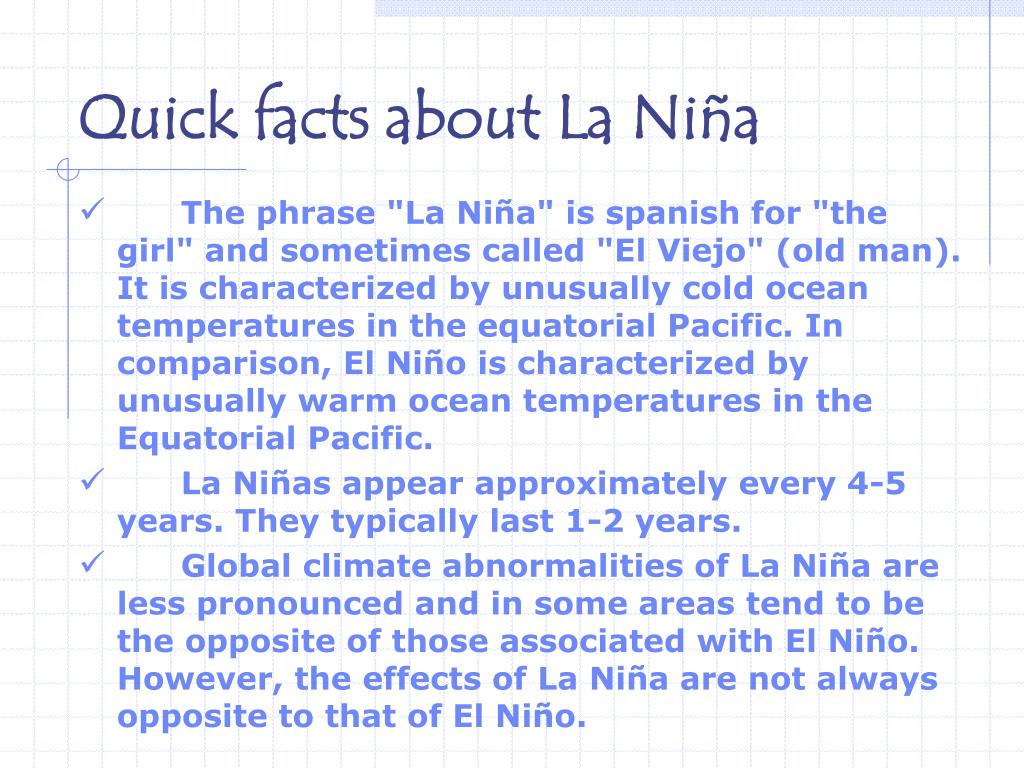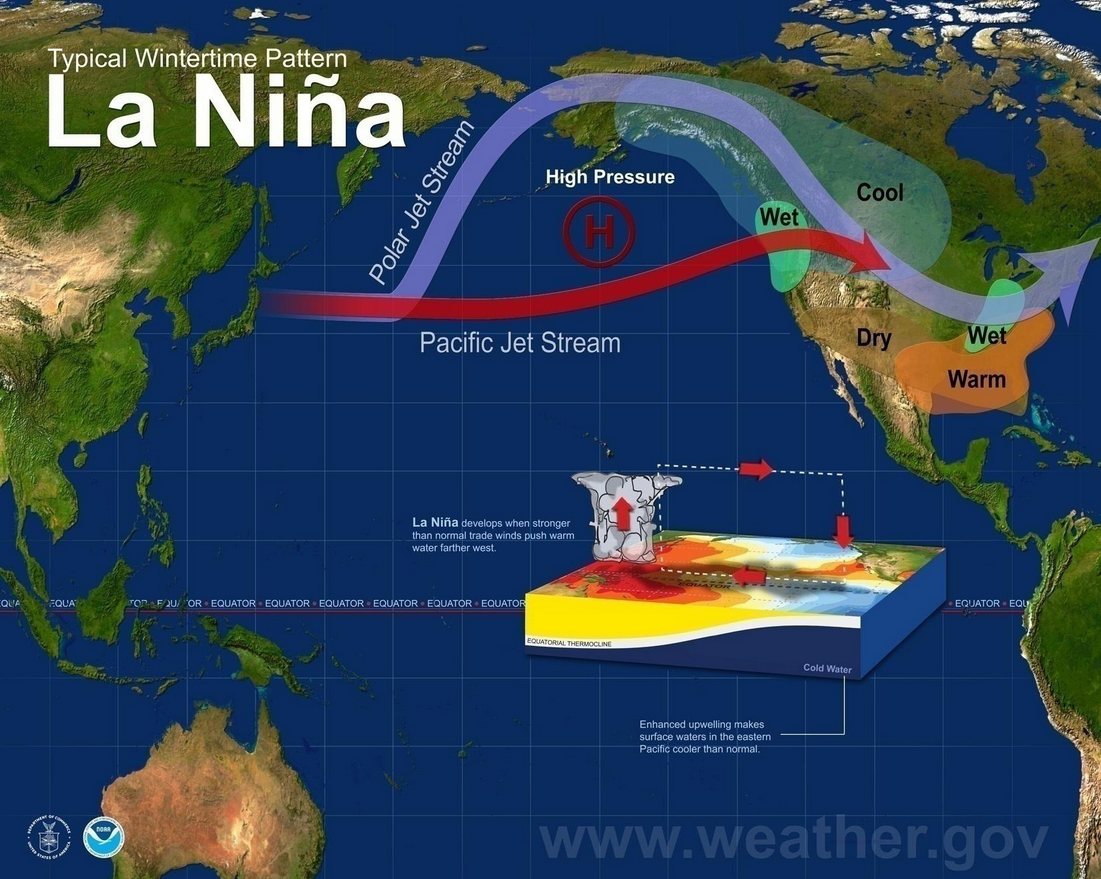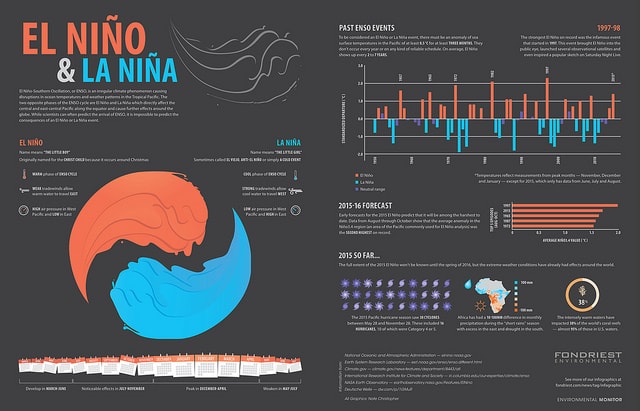5 Facts About La Nina
Process of La Nina. La Niña was one of the three Spanish ships used by Italian explorer Christopher Columbus in his first voyage to the West Indies in 1492.

Ppt El Nino La Nina Powerpoint Presentation Free Download Id 3200380
During La Niña waters off the Pacific coast are colder and contain more nutrients than usual.

5 facts about la nina. Spanish for little girl La Niña is the name given to the large-scale cooling of sea surface temperatures across the central and equatorial Pacific Ocean. La Niña causes the jet stream to move northward and to weaken over the eastern Pacific. La Niña years tend to see cooler than average maximum temperatures across most of mainland Australia south of the tropics particularly during the second half of the year.
May 2010 between the end of El Niño and the start of the 201011 La Niña. The first step on our Is it La Niña decision tree asks is the monthly Niño-34 Index equal to or less than -05C The Niño-34 Index our primary metric for ENSO is the anomaly in sea surface temperature in the central equatorial Pacific anomaly the difference from the long-term average. El Niños and La Niñas.
Both El Niño and La Niña have the power to change 50 of the planets climates making them the most powerful phenomena on earth. The impacts of La Niña on our weather and climate have been highly variable throughout history. During La Niña winters the South sees warmer and drier conditions than usual.
Very heavy rains and flooding in the Philippines Brazil Malaysia and Indonesia are also largely determined by the La Niña. 5 facts about this climate powerhouse and why it matters for hurricane season. La Niña occurs when the waters of the central and equatorial Pacific are cooler than normal after wind blows warm water at the oceans.
La Niña is associated with the higher than normal rainfall in the central Andes South America often causing catastrophic flooding. In some years though the trade winds weaken. Swath 5N-5S 170W-120W of the tropical Pacific Ocean by averaging measurements collected there over the 30-year period 1986-2015.
Photograph courtesy NOAA Environmental Visualization Laboratory. La Niña events tend to settle in for longer than El Niños persisting for somewhere between nine months to two years. It is one part of the larger and naturally occurring ocean-atmosphere phenomenon known as the El NiñoSouthern Oscillation or ENSO pronounced en-so cycle.
The observed difference from the average temperature in that region whether warmer or cooleris used to indicate the current phase of ENSO. La Nina is a cold water phase of a large climate pattern called El Nino southern oscillation. This is due to increased cloud cover and rainfall.
El Niño has a counter climate change called La Niña. Relatively neutral state of the ocean January 2011 peak of the 201011 La Niña. However she was commonly referred to by her nickname La Niña which was probably a pun on the name of her owner Juan Niño of Moguer.
La Niña is part of an important climate phenomena called ENSO or the El Niño-Southern Oscillation. Five things to know about La Niña. Scientists refer to that swath as the Niño 34 region.
Waters towards Asia piling it up in the western Pacific. As was tradition for Spanish ships of the day she bore a female saints name Santa Clara. Nobody is quite sure why El Nino occurs or why it occurs in a regular cycle every three to seven years or so.
La Niña l ə ˈ n i n. Occurrence of Typhoons Hurricanes and very cold weather. El Nino occurs when the tropical Pacific waters are warmer than normal while La Nina refers to when the tropical Pacific waters are colder than normal.
Disease related to contaminated water due to flooding such as acute gastroenteritis typhoid fever cholera and hepatitis A. La Niña is typically associated with sustained positive SOI values. The North and Canada tend to be wetter and colder.
Average is 19912020. Is an oceanic and atmospheric phenomenon that is the colder counterpart of El Niño as part of the broader El NiñoSouthern Oscillation ENSO climate patternThe name La Niña originates from Spanish for the girl by analogy to El Niño meaning the boyIn the past it was also called an anti-El Niño and El Viejo meaning the old man. La Niña is associated with rainy weather in Australia and Indonesia and cooler sea-surface temperatures off the coast of South America.
Cooler than normal sea surface temperatures in the central and eastern Pacific. La Niña is a weather phenomena characterized by unusually cold ocean temperature in the Equatorial Pacific which causes increased numbers of tropical storms in the Pacific Ocean. While El Niños occur when tropical Pacific waters are warmer than usual La Niñas occur is when tropical Pacific waters are colder than usual.
During normal conditions trade winds which blow from east to west push warm surface.

What Is La Nina And Causes And Effects Of La Nina Earth Eclipse


Posting Komentar untuk "5 Facts About La Nina"